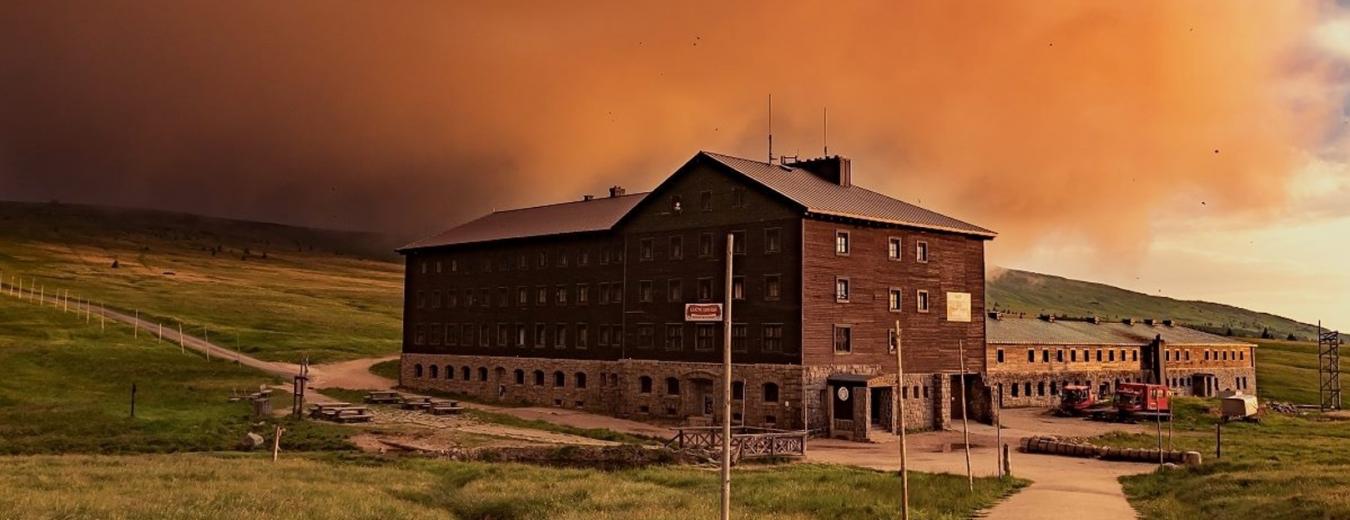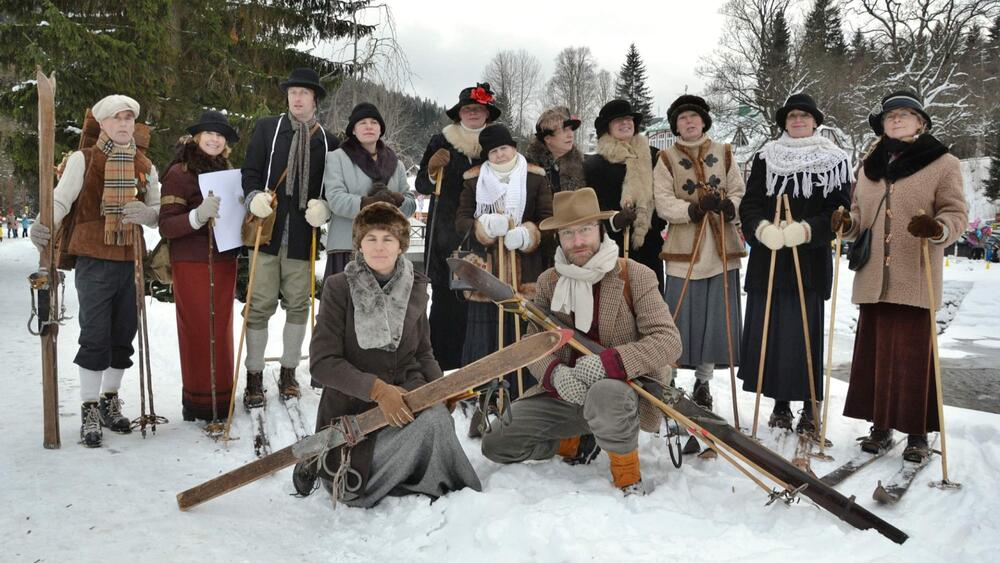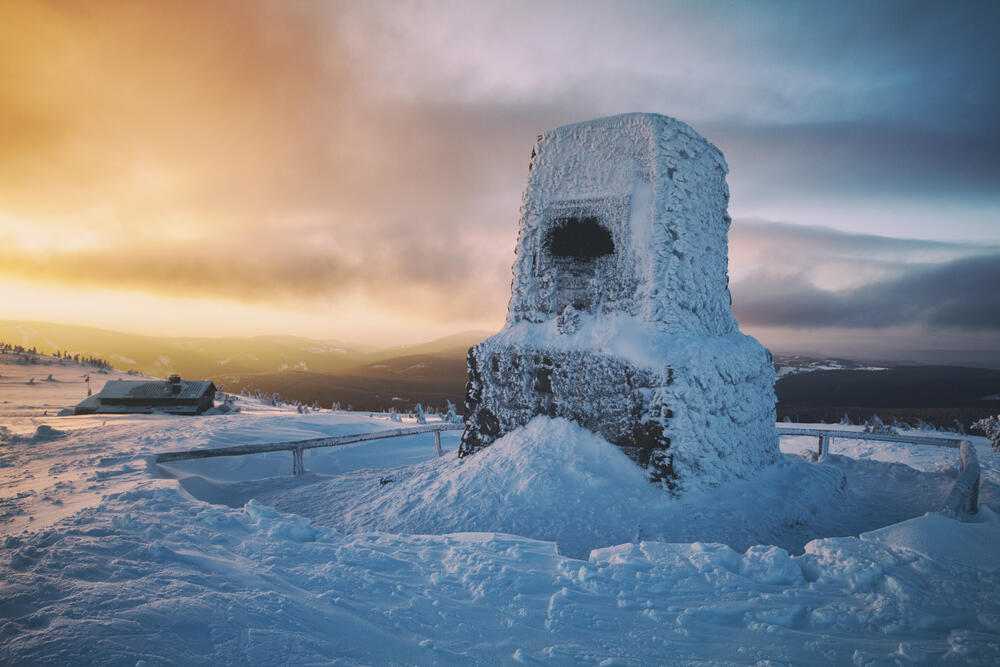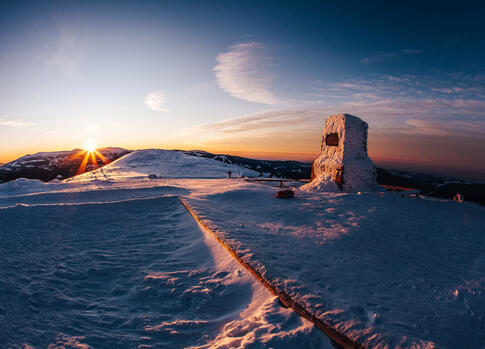Development of tourism
The beginnings of tourism in the Krkonose at the end of the 18th century initially only concerned the summer period. It was solely a matter for wealthy municipal citizens and intelligence. Chalets began to be built on the ridges, serving to provide overnight shelter for tourists. In winter, typical Krkonose sledges were used as the means of transport. At the end of the 19th century, Count Harrach visited Norway and saw skis, which later he had made in Dolni Stepanice. They facilitated access for foresters in snow-covered mountain forests. Sports skiing also developed, the first ski contests were held and the first ski clubs were founded.







